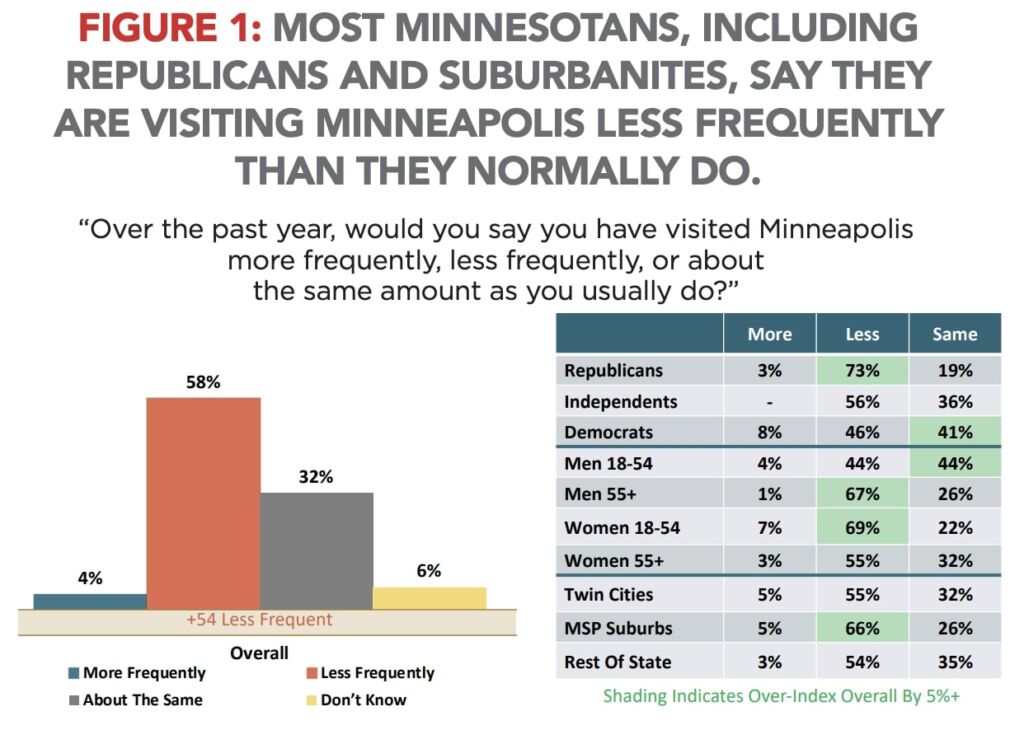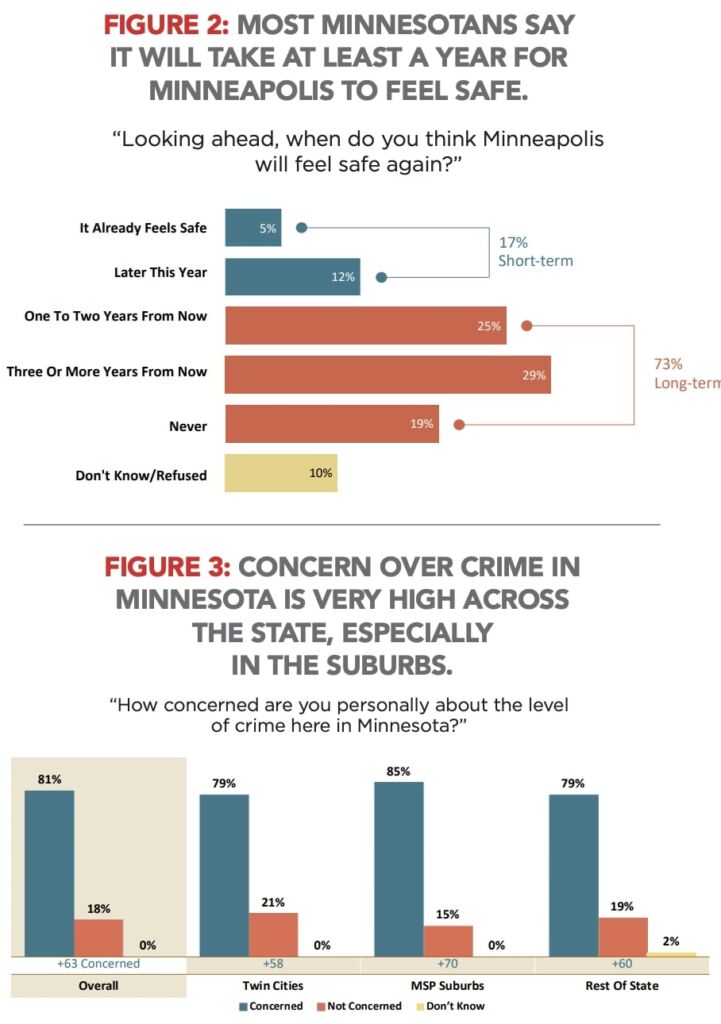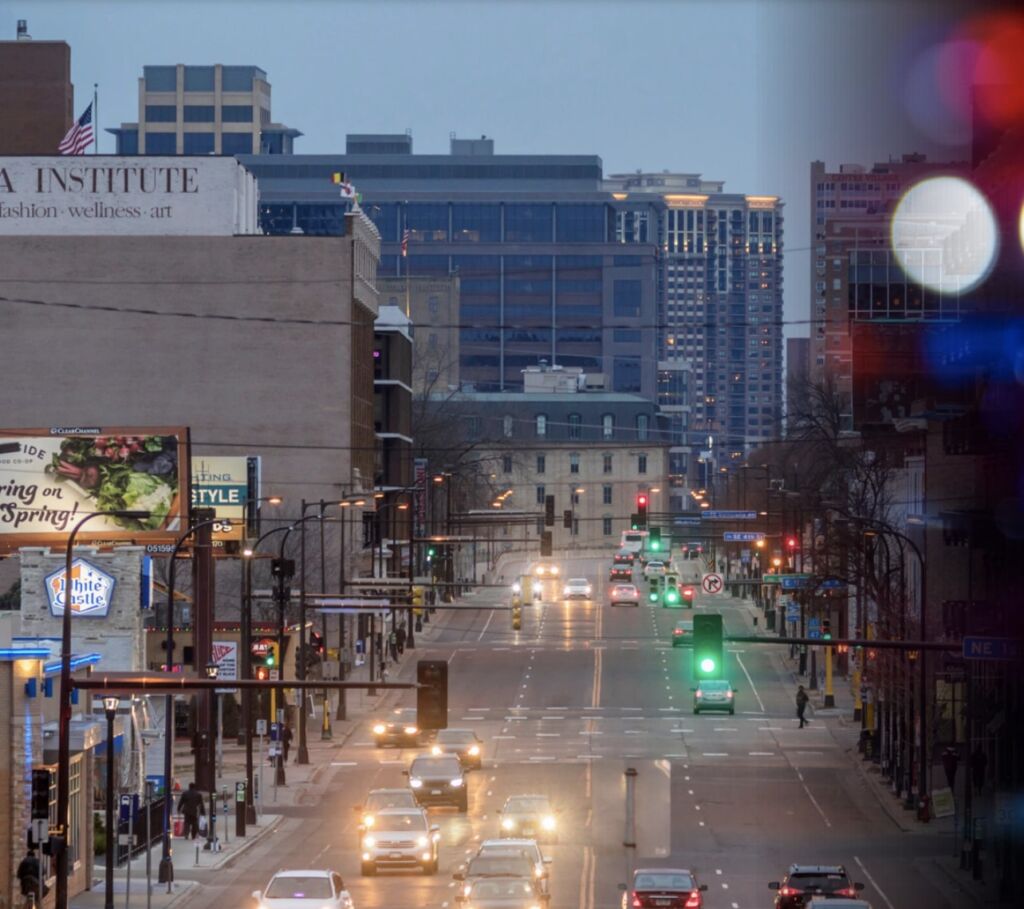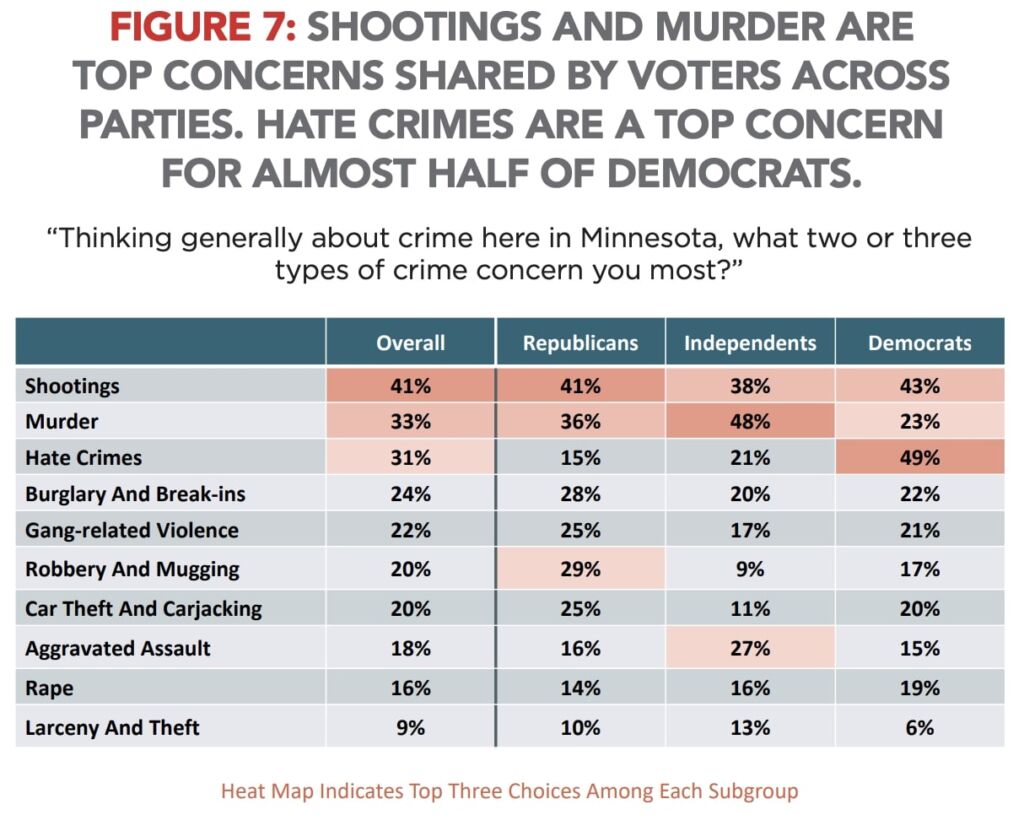Poll: When perception matches reality
The Thinking Minnesota Poll reveals that Minnesotans trust the police, avoid Minneapolis, and increasingly blame Gov. Tim Walz for rising crime rates.
In Thinking Minnesota’s cover story this month, author Jenna Stocker refers to Minneapolis as a “dystopian wasteland” with an “aura of lawlessness.” The latest Thinking Minnesota Poll shows that most Minnesotans agree. Fifty-eight percent of state residents polled last month say they are visiting Minneapolis less frequently, while 73 percent predict it will take at least a year before they feel safer in the city, 30 percent say it will be three years before they visit Minneapolis again and a shocking 19 percent say they will never come back.
That’s not good news for Minnesota’s largest city and the economic engine that drives its economy. These safety concerns impact more than the 120 nights a year when downtown Minneapolis hosts a Twins or Timberwolves game, or when people want to attend concerts or theater productions, or are just looking for a night out. Concern over crime continues to hinder occupancy in Minneapolis’s commercial buildings, and the list of restaurants and bars closed for good continues to grow in 2021.
The poll was conducted for American Experiment by Meeting Street Insights, a nationally recognized polling operation based in Charleston, South Carolina. Using a mix of cell phones and landline phones, the company interviewed 500 registered voters across Minnesota from June 2 to 6. The margin of error is ±4.38%.


The poll also reveals that worries about public safety have spilled beyond the borders of Minneapolis. Eighty-one percent of respondents said they were personally concerned with crime in Minnesota, with the highest numbers coming from the suburbs. Women over age 55 are especially worried, with 91 percent voicing concern for their personal safety.
“Our goal for this poll was to look beyond the debate around policing and find out how Minnesotans personally feel about crime and safety,” American Experiment President John Hinderaker said. “Unfortunately, their feelings match the statistics — perceptions about crime are rising because actual crime is rising.”
What do people fear? Shootings was the most popular answer followed by murder and hate crimes. Again, women over age 55 stood out, with 50 percent voicing their concerns about shootings.

Democrats differentiated themselves too, compared to other respondents on the question of what type of crime concerned them most and on the root causes of those offenses. While 49 percent of Democrats told us hate crimes concerned them most, only 21 percent of Independents and 15 percent of Republicans chose that response. Democrats also believe discrimination against minorities is most responsible for crime in Minnesota, with 32 percent choosing this response. Only two percent of Republicans and eight percent of Independents believe discrimination is driving crime right now.
Unlike other Minnesotans, Democrats appear to think in terms of politics instead of personal safety when answering poll questions. How else do you explain the disconnect between their concern over hate crimes and the actual statistics? Among poll respondents overall, there’s nothing paradoxical between their perceptions of crimes, such as shootings and murder, and the actual crime statistics.


Walz falls
Minnesotans have lost confidence in Gov. Tim Walz to address the growing problem of riots and lawlessness in Minneapolis, according to the poll. Fifty-five percent of respondents disapprove of Walz’s response to the riots, in stark contrast to the June 2020 Thinking Minnesota Poll, in which 59 percent approved of the way he handled the riots. Related to that, 48 percent of Minnesotans now believe the state is on the wrong track, compared to 45 percent who believe the state is on the right track. This is the first time in recent memory that a plurality of respondents believe Minnesota is trending the wrong way, a reflection of their lack of confidence in Walz.
Crime is driving the wrong track sentiment too, with 80 percent agreeing that crime has gotten worse over the past year.
“Minnesotans are tired of lawlessness and violent crime, and they are holding Governor Walz accountable,” Hinderaker added. “These numbers reflect his poor handling of the riots last year and his continued silence and inaction in the face of violent crime.”


Minnesotans trust law enforcement
While Minnesotans have lost trust in Walz their support for law enforcement remains strong. Eighty-five percent trust the police in their local community to act in the best interests of the public, unchanged from one year ago. When given a list of options, 69 percent of respondents trust law enforcement to ensure their safety, compared to 50 percent for Walz, 36 percent for the legislature and 32 percent for Minneapolis Mayor Jacob Frey. A strong plurality of Minnesotans believe that skyrocketing rates of crime evolve from a lack of support for law enforcement.
“Minnesotans trust law enforcement, not political leaders, to keep us safe,” Hinderaker said.
American Experiment recently relaunched a campaign to support law enforcement in Minnesota at www.SupportMNPolice.com. The effort includes a petition to support the police, radio ads that began on June 15, and a billboard campaign that started on June 21.
In another area in which perception matches reality, 81 percent of Minnesotans worry about their state’s ability to recruit qualified new police officers. Enrollment in police training programs was already trending down before 2020, and cities are struggling to hire and train new recruits to replace their depleted forces.
About the pollster
Rob Autry, founder of Meeting Street Insights, is one of the nation’s leading pollsters and research strategists.